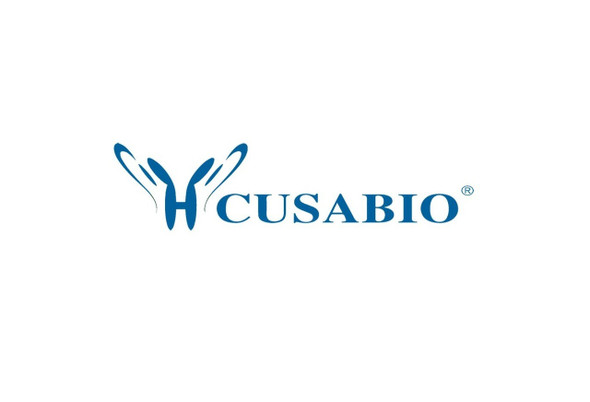Cusabio Human Recombinants
Recombinant Human 26S proteasome non-ATPase regulatory subunit 14 (PSMD14) | CSB-BP018904HU
- SKU:
- CSB-BP018904HU
- Availability:
- 3 - 7 Working Days
Description
Recombinant Human 26S proteasome non-ATPase regulatory subunit 14 (PSMD14) | CSB-BP018904HU | Cusabio
Alternative Name(s): 26S proteasome regulatory subunit RPN11 (26S proteasome-associated PAD1 homolog 1) (POH1)
Gene Names: PSMD14
Research Areas: Cell Biology
Organism: Homo sapiens (Human)
AA Sequence: MDRLLRLGGGMPGLGQGPPTDAPAVDTAEQVYISSLALLKMLKHGRAGVPMEVMGLMLGEFVDDYTVRVIDVFAMPQSGTGVSVEAVDPVFQAKMLDMLKQTGRPEMVVGWYHSHPGFGCWLSGVDINTQQSFEALSERAVAVVVDPIQSVKGKVVIDAFRLINANMMVLGHEPRQTTSNLGHLNKPSIQALIHGLNRHYYSITINYRKNELEQKMLLNLHKKSWMEGLTLQDYSEHCKHNESVVKEMLELAKNYNKAVEEEDKMTPEQLAIKNVGKQDPKRHLEEHVDVLMTSNIVQCLAAMLDTVVFK
Source: Baculovirus
Tag Info: N-terminal MBP-tagged and C-terminal 6xHis-tagged
Expression Region: 1-310aa
Sequence Info: Full Length
MW: 79.2 kDa
Purity: Greater than 85% as determined by SDS-PAGE.
Relevance: Component of the 26S proteasome, a multiprotein complex involved in the ATP-dependent degradation of ubiquitinated proteins. This complex plays a key role in the maintenance of protein homeostasis by removing misfolded or damaged proteins, which could impair cellular functions, and by removing proteins whose functions are no longer required. Therefore, the proteasome participates in numerous cellular processes, including cell cycle progression, apoptosis, or DNA damage repair. The PSMD14 subunit is a metalloprotease that specifically cleaves 'Lys-63'-linked polyubiquitin chains within the complex. Plays a role in response to double-strand breaks: acts as a regulator of non-homologous end joining by cleaving 'Lys-63'-linked polyubiquitin, thereby promoting retention of JMJD2A/KDM4A on chromatin and restricting TP53BP1 accumulation. Also involved in homologous recombination repair by promoting RAD51 loading.
Reference: "K63-specific deubiquitination by two JAMM/MPN+ complexes: BRISC-associated Brcc36 and proteasomal Poh1." Cooper E.M., Cutcliffe C., Kristiansen T.Z., Pandey A., Pickart C.M., Cohen R.E. EMBO J. 28:621-631(2009)
Storage: The shelf life is related to many factors, storage state, buffer ingredients, storage temperature and the stability of the protein itself. Generally, the shelf life of liquid form is 6 months at -20?/-80?. The shelf life of lyophilized form is 12 months at -20?/-80?.
Notes: Repeated freezing and thawing is not recommended. Store working aliquots at 4? for up to one week.
Function:
Involvement in disease:
Subcellular Location:
Protein Families:
Tissue Specificity:
Paythway:
Form: Liquid or Lyophilized powder
Buffer: If the delivery form is liquid, the default storage buffer is Tris/PBS-based buffer, 5%-50% glycerol. If the delivery form is lyophilized powder, the buffer before lyophilization is Tris/PBS-based buffer, 6% Trehalose, pH 8.0.
Reconstitution: We recommend that this vial be briefly centrifuged prior to opening to bring the contents to the bottom. Please reconstitute protein in deionized sterile water to a concentration of 0.1-1.0 mg/mL.We recommend to add 5-50% of glycerol (final concentration) and aliquot for long-term storage at -20?/-80?. Our default final concentration of glycerol is 50%. Customers could use it as reference.
Uniprot ID: O00487
HGNC Database Link: N/A
UniGene Database Link: N/A
KEGG Database Link: N/A
STRING Database Link: N/A
OMIM Database Link: N/A










